Songwriting can be an overwhelming process…
But it doesn’t have to be.
Today, we’ll be unleashing the ultimate secrets to writing songs that resonate with listeners and top the charts.
Whether you’re a seasoned songwriter or just starting your journey, this guide is your go-to resource for crafting unforgettable tunes, writing melodies, creating lyrics, and everything in between.
It’ll have your listeners begging for more.
We’ll dive into a comprehensive 7-step process, breaking down the songwriting process from start to finish 一 from finding inspiration to mastering your final track.
By the time you’re done with this step-by-step guide, you’ll never have to question how to write a song again.
Let’s dive in.
Table of Contents
Step 1: Finding Inspiration
Inspiration is the fuel behind writing your own songs, especially when you’re first starting out.
Without it, the process can be tedious and uninspiring.
You might even want to give up before you even start.
So, how do you find that spark to ignite your creativity?…
1. Draw From Personal Experience
When learning how to write a song, one of the most authentic sources of inspiration can come from your own life.
Think about the most intense experiences you’ve had, the emotions you’ve felt, and the stories you can tell.
Reflect on your relationships, past and present, your struggles and triumphs, and even your dreams and aspirations.
This is also a great way to come up with your song title.
Personal experiences give your songwriting depth and authenticity, and your listeners will certainly be able to tell.
It will resonate with your audience on a much deeper level.
Think about your favorite song… can’t you feel the singer feeling the emotions they’re singing about?
2. Explore Different Genres
Another way to find inspiration is by listening to different genres of music.
Broadening your musical palette can introduce you to new sounds, melodies, chord progressions, and song structures that you might not have encountered before.
Don’t be afraid to venture outside your comfort zone and explore various musical styles.
You never know where you’ll find that unique element to spice up your songwriting.
Hybrid genres are especially popular right now, you never know, you could create the first of its kind.
3. Use Prompts & Challenges
Sometimes, when you write songs, all you need to kickstart your creative process is a little push.
Songwriting prompts and challenges can provide you with a starting point to build upon.
Look for video tutorials and prompts online.
Join songwriting groups or forums, or even participate in songwriting challenges to enhance your songwriting skills.
These activities can help you break free from writer’s block and encourage you to write without overthinking.
You can even collaborate with accomplished songwriters and ask questions about song ideas, practical tips, and music in general.
Step 2: Developing a Song Structure
When writing songs, a well-crafted song structure provides a framework for your lyrics, melody, and advanced chord progressions.
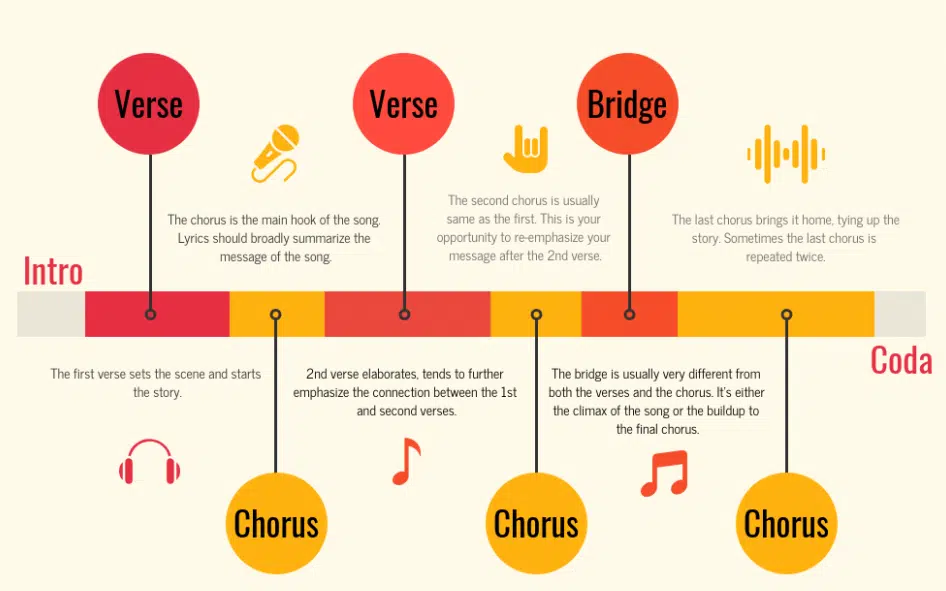
They carefully guide your listeners through a satisfying musical journey.
The key is to strike a balance between repetition and variety, creating a sense of familiarity while still keeping things fresh and engaging.
Song Structure: Examples & Methods
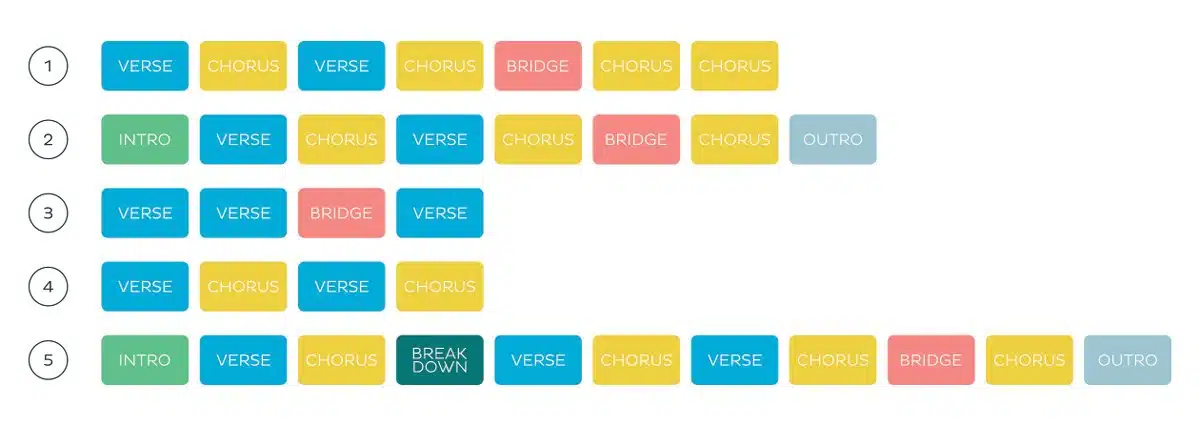
There are several tried-and-true song structures that many successful songs use, including:
- Verse-Chorus-Verse-Chorus-Bridge-Chorus (ABABCB) 一 This is one of the most popular structures in contemporary music.
For example, think of Adele’s “Rolling in the Deep” or Taylor Swift’s “Shake It Off.”
- Verse-Verse-Chorus-Verse-Chorus (AABAB) 一 This song structure, often used in folk and storytelling songs, delays the introduction of the chorus.
Bob Dylan’s “Blowin’ in the Wind” and The Beatles’ “Yesterday” are great examples.
- Verse-Chorus-Verse-Chorus (ABAB) 一 In this simplified song structure, the bridge is omitted, focusing on the interplay between verses and choruses.
Radiohead’s song “Creep” and Nirvana’s “Smells Like Teen Spirit” both use this song structure.
Customize Your Structure
While it’s helpful to start with a common structure as a foundation, don’t be afraid to customize it to suit your unique vision.
You might choose to include something unconventional when you write a song, such as:
- A pre-chorus to build anticipation
- An instrumental break to showcase your musical prowess
- A surprise key change to keep your listeners on their toes
Ultimately, the structure, including the pre-chorus, should serve your song’s mood, overall narrative, and emotional tone.
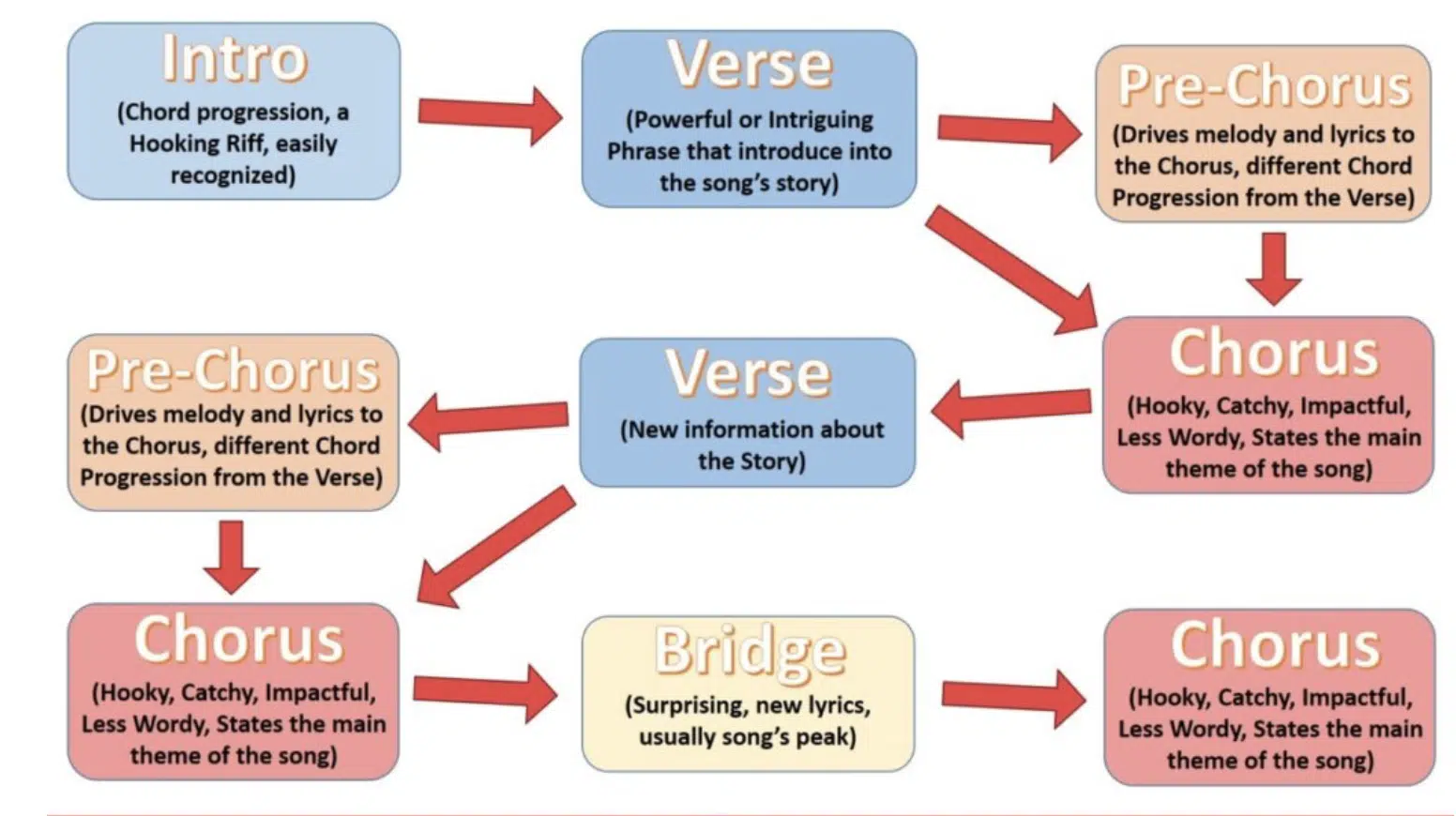
You’ll find your unique style along the way, just don’t forget to experiment and play around with different elements.
Step 3: Writing Lyrics
Writing captivating lyrics is an essential skill for any aspiring songwriter.
To write lyrics that will resonate with your audience, you need to:
- Delve into the heart of your emotions
- Craft compelling narratives
- Find the perfect balance of poetic beauty and raw honesty
Let’s dive into some key tips to help you write song lyrics that will captivate your listeners:
Lyric Lines: Unleash Your Raw Material
Start by jotting down your thoughts, feelings, and ideas—your raw material—as they come to you.
Don’t worry about structure or rhythm just yet.
This process allows you to access your innermost thoughts and emotions, providing a rich foundation for your lyric lines.
Craft Verse Lyrics That Tell A Story
When writing your verse lyrics, focus on storytelling and creating vivid imagery.
Each verse lyric line should build upon the previous one in a very fluid, natural way.
It should weave a tapestry of emotions, memories, and experiences that your audience can relate to.
Remember, the verse is your opportunity to set the stage, introduce characters, and draw your listeners into your world.
Design A Powerful Chorus Lyric
The chorus lyric is the emotional core of your song.
It provides the central message or theme that your audience will remember.
To write an unforgettable chorus:
- Aim for simplicity and repetition
- Make sure it’s insanely catchy
- Use strong, evocative language that encapsulates the essence of your song
You may even consider slightly tweaking the lyrics between the first chorus and the second chorus.
This can help you write music that maintains intrigue and keeps your listeners engaged.
Experiment With Rhyme Schemes and Structure
As you refine your lyrics, play around with different rhyme schemes and structures to find the perfect fit for your song.
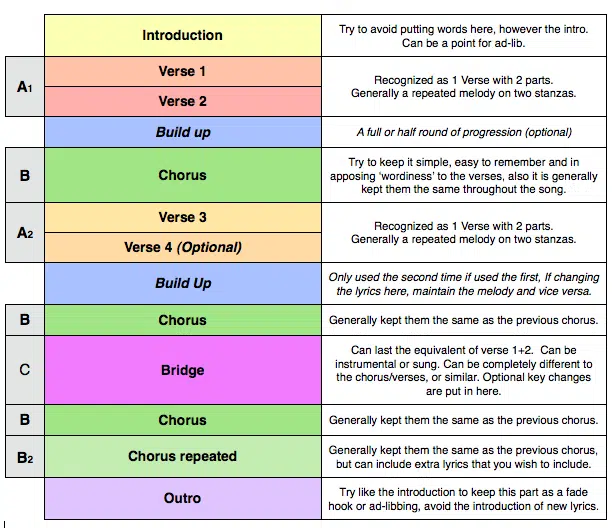
Whether it’s a traditional AABB, ABAB, or a more unconventional pattern, the right rhyme scheme can enhance the flow and impact of your lyrics.
Keep in mind that breaking the rules can sometimes lead to the most memorable and distinctive songs.
Don’t be afraid to take risks and push boundaries.
Polish & Revise Your Lyrics
Once you’ve crafted your verse and chorus, take a step back and assess your lyric writing.
You’ll want to ask yourself:
- Are my words and phrases effectively conveying my emotions?
- Are my rhymes engaging?
- Are my lyrics thought-provoking?
Be prepared to revise and rework your lyrics until it truly sounds good.
By following these songwriting tips and embracing your creativity, you’ll be well on your way to writing lyrics that will captivate and inspire.
Remember, the key to crafting unforgettable lyrics is to stay true to your emotions, dig deep, and never be afraid to take risks.
Step 4: Creating a Verse Melody
The verse melody sets the tone for your song and supports your vocal melodies by conveying emotion and creating a sense of dynamics.
Creating a captivating melody for your verses is certainly vital if you’re going to write a song like a pro.
You don’t want the same melody or common song structure as everyone else, so it’s time to get creative.
Melodic Contour
The contour of your own melody refers to the shape created by the pitches shifting as they rise and fall.
To create an engaging melodic verse, experiment with various contours, combining ascending and descending phrases, leaps, and steps.
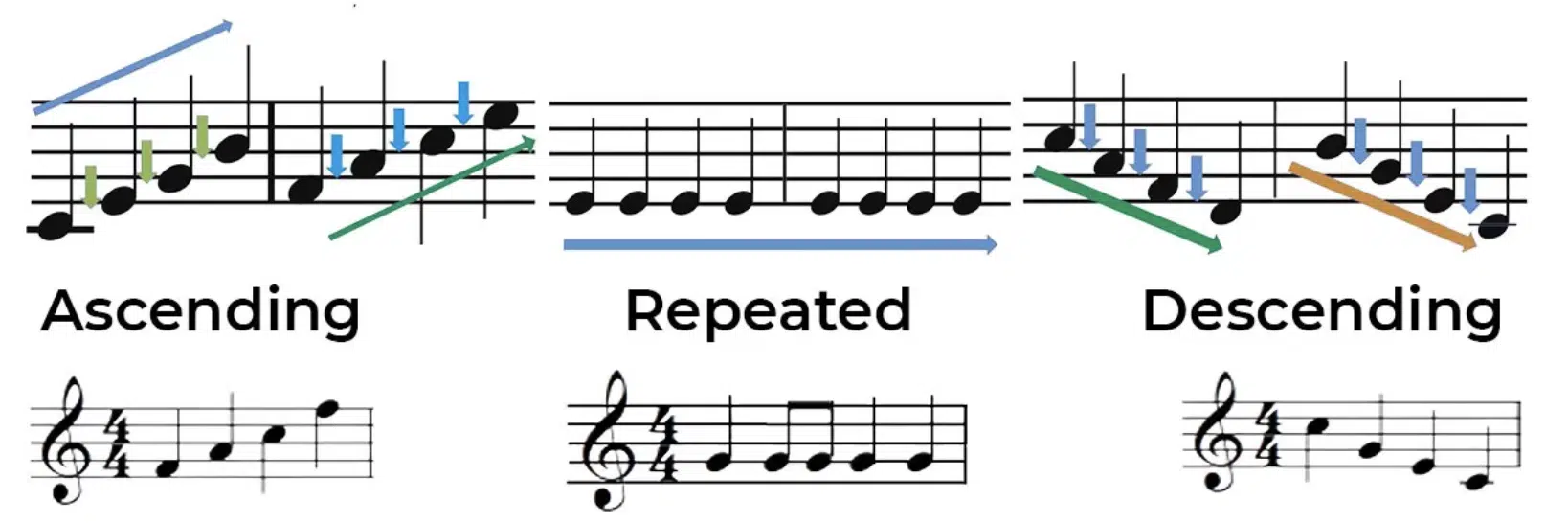
This will help your melody stand out from many songs and capture your listeners’ attention.
One of the keys to a memorable melody is the effective use of repetition and variation.
Repeating certain melodic phrases can help create a sense of familiarity.
Plus, it introduces subtle variations to keep your melody fresh and engaging.
For example, in Ed Sheeran’s “Shape of You,” the melody (verse) repeats a simple rhythmic pattern with slight variations in pitch.
This creates a catchy, memorable tune that you’ll surely remember.
Creating Contrast With Your Chorus
When crafting your verse’s melody, consider how it will interact with your chorus melody.
Aim for a contrast between the two sections to make your song more unique and dynamic.
This could involve:
- Using a different rhythmic pattern
- Incorporating a change in pitch
- Exploring a different tonality altogether
In Lady Gaga’s “Bad Romance,” the verse melody features a subdued, staccato rhythm, while the chorus explodes with a soaring, anthemic quality.
Balance Simplicity and Complexity
Striking the right balance between simplicity and complexity is essential for a successful verse melody.
While you want your melody to be catchy and easy to remember, you also want to avoid being overly predictable or monotonous.
When you write a song, always experiment with different melodic ideas, and don’t be afraid to take risks and shock people.
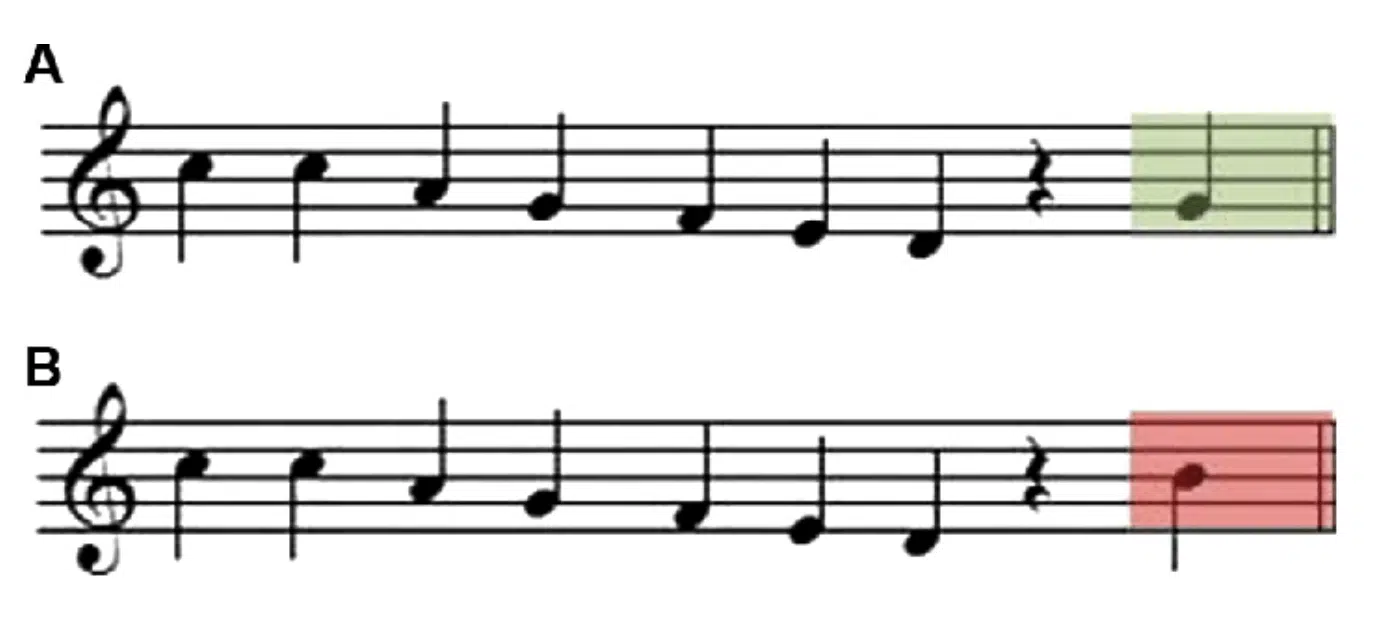
Sometimes, a surprising melodic twist or unexpected note can be the perfect touch to make your verse stand out.
Step 5: Crafting a Chorus Melody
Chorus melodies are often the emotional climax of your favorite songs the song.
It provides a memorable and powerful hook that leaves a lasting impression on your listeners.
You want them to have the chorus lyric of your song stuck in their heads for days.
Here are some tips for creating an unforgettable chorus melody for your own songs:
Rhythm & Phrasing
In addition to pitch, the rhythm and phrasing of your melody play a crucial role in defining its character.
Pay attention to the natural rhythm of your lyrics.
You don’t want them to seem lackluster or crowded.
To add extra interest and momentum:
- Add syncopation

- Use repetition
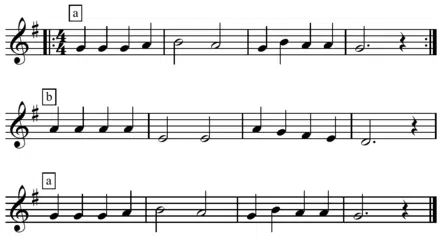
- Incorporate varying phrase lengths
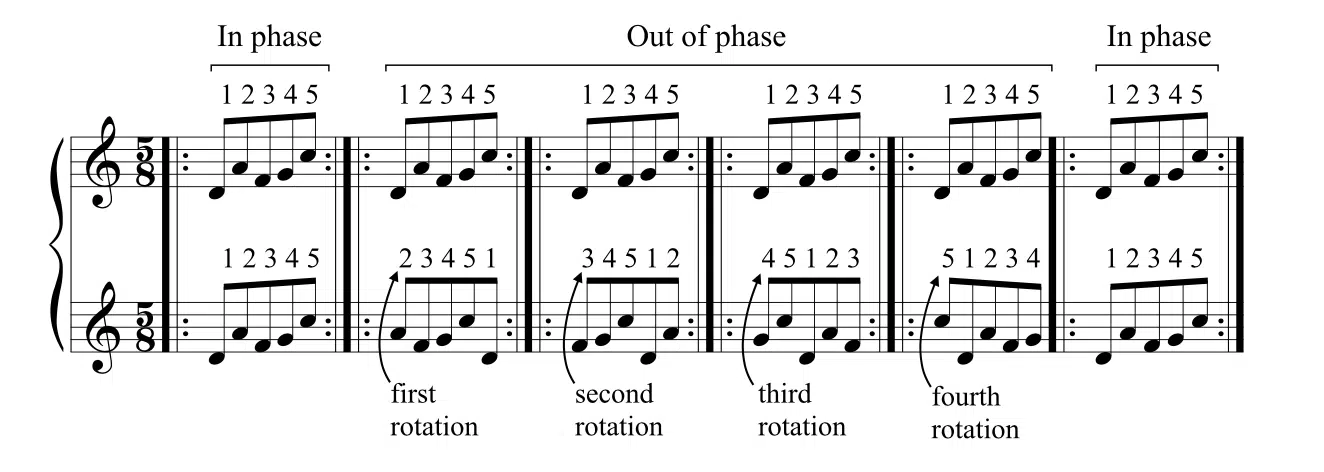
Be sure to leave room for breaths and pauses.
They can enhance the emotional impact of your melody.
Emphasize The Hook
A strong hook is a key component of a successful chorus.
The hook is a catchy, memorable phrase or melody that grabs your listeners’ attention and sticks in their minds long after the song has ended.
When writing your chorus melody, focus on creating a distinct and memorable hook that stands out from the rest of your song.
Think of the line from Queen’s “Bohemian Rhapsody,” where the iconic “Mama mia, let me go” serves as a powerful and unforgettable hook.
Build On The Verse Melody
While your chorus melody should contrast with your verses’ melody, it should also build upon and complement it.
This can be achieved by using similar melodic motifs or rhythmic patterns while introducing new elements that add excitement and energy.
For example, in Michael Jackson’s “Billie Jean,” the chorus melody compliments the verse’s rhythmic pattern and melodic phrases.
While simultaneously elevating the energy and emotion of the entire song.
Use A Higher Pitch Range
One common technique for creating an impactful chorus melody is to use a higher pitch range than the melody of your verse.
This can help emphasize the emotional intensity of the chorus and make it stand out from the rest of the song.
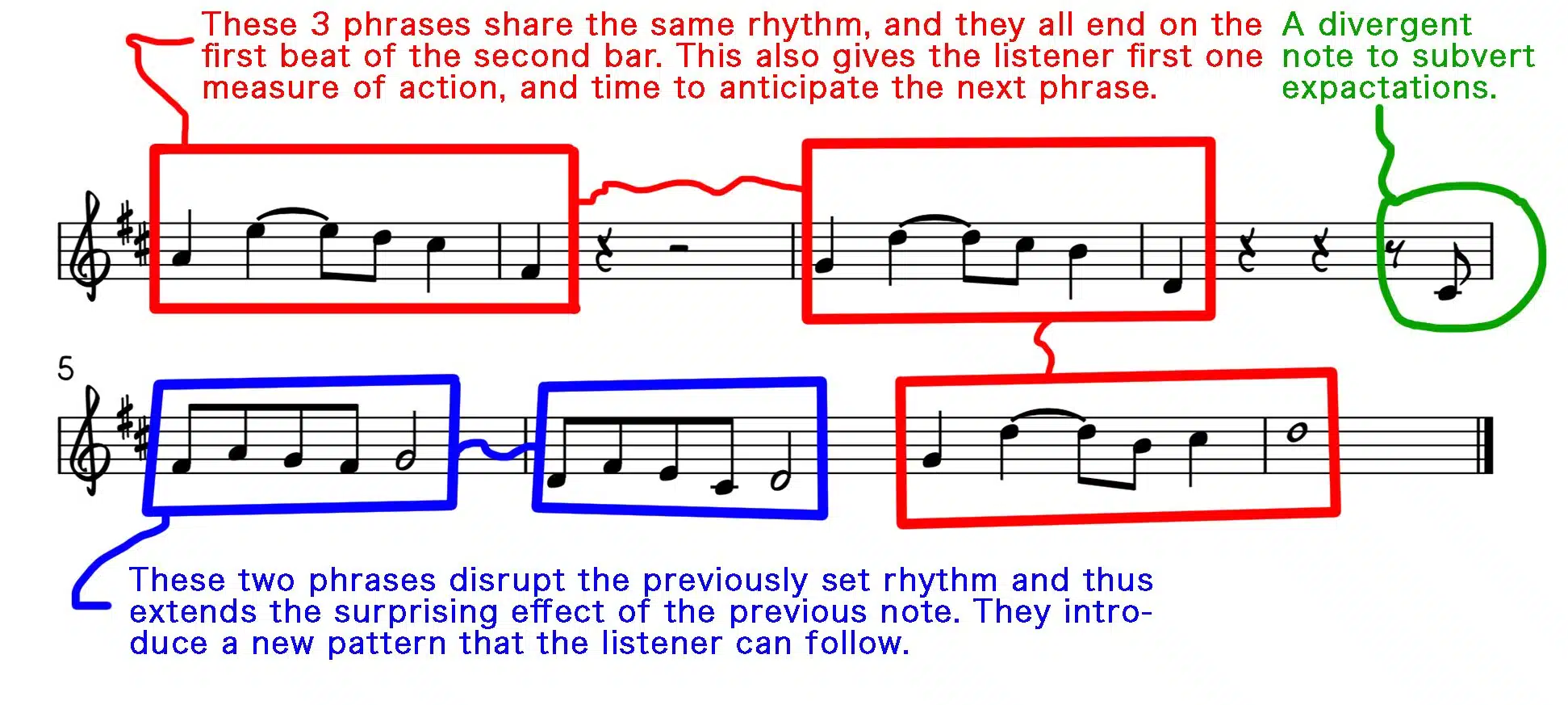
In Beyoncé’s “Halo,” the chorus soars to a higher pitch range.
It creates a sense of emotional release for this great song and provides a dramatic contrast to the more subdued melody.
Simplify The Rhythm
While the melody of your verse may have a more intricate rhythmic pattern, simplifying the rhythm in your chorus can help make it more accessible and memorable for your listeners.
It allows the chorus to act as a musical anchor and provides a moment of clarity and focus amidst the more complex verse sections.
In Pharrell Williams’ “Happy,” the chorus features a simple, repetitive rhythm that contrasts with the more syncopated verse.
This is why it’s instantly recognizable and easy to sing along to.
Step 6: Building Chord Progressions
Chord progressions form the harmonic foundation of your song.
They support your melody and lyrics by creating a sense of:
- Movement
- Tension
- Resolution
Familiar progressions provide a strong foundation for most songs.
So, starting with a common chord progression can really resonate with your audience.
They can help create a sense of cohesion and familiarity that your listeners will appreciate.
Some popular progressions include:
- I-IV-V (e.g., C-G-F) 一 Creates a sense of familiarity and stability, evoking feelings of comfort and warmth.
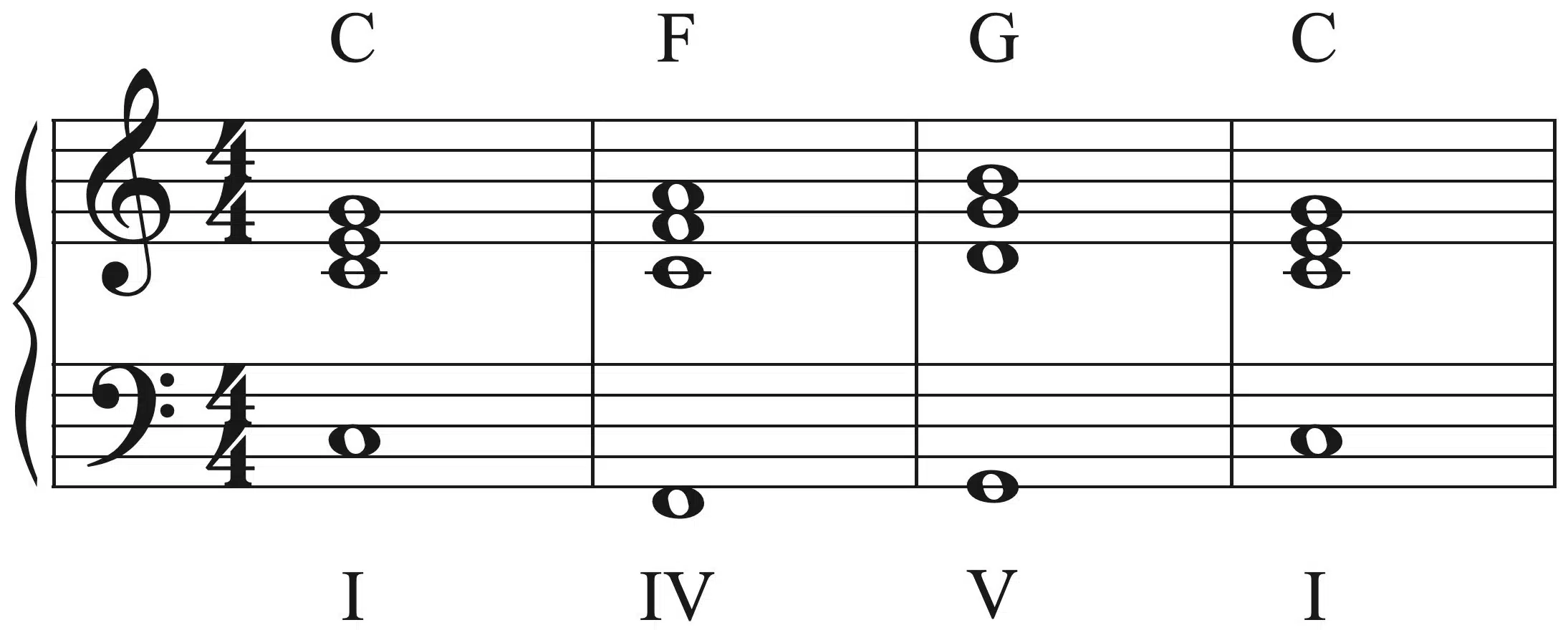
- I-V-vi-IV (e.g., C-G-Am-F) 一 Offers a mix of uplifting and emotional resonance, capturing a blend of nostalgia and hopefulness.

- ii-V-I (e.g., Dm-G-C) 一 Elicits a sophisticated, jazzy vibe, providing a sense of satisfaction as it resolves to the tonic chord.

This chord structure can be found in countless popular songs, from The Beatles’ “Let It Be” (I-IV-V) to Journey’s “Don’t Stop Believin'” (I-V-vi-IV).
Experiment With Chord Substitutions
Chord substitutions can add a sense of surprise and sophistication to your progressions.
For example, you might replace a IV chord with a ii chord, or a V chord with a vii° chord.
You should try this method out for a number of reasons, such as:
- Chord substitutions can add harmonic interest and unpredictability.
Generally speaking, they keep the listener engaged by challenging their expectations and preventing the song from sounding too repetitive.
- Using chord substitutions can create smoother voice leading.
This can make the transitions between chords feel more seamless and natural, ultimately enhancing the overall musical flow and cohesion.
- Chord substitutions allow for greater emotional expression.
Replacing a chord with an alternative can subtly change the mood or atmosphere of a passage.
It can provide you with more creative possibilities to evoke specific feelings or emotions.
- Chord substitutions can be used to build tension and anticipation.
This, in turn, makes the resolution to the original chord even more satisfying and impactful for the listener.
- Chord substitutions can showcase your knowledge of music theory.
When you add chords that replace existing chords, it emphasizes your ability to craft unique and sophisticated music.
Play With Harmonic Rhythm
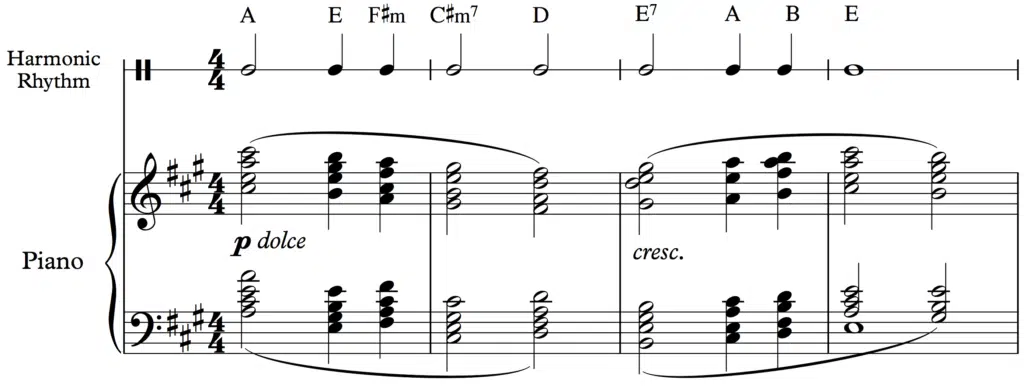
The harmonic rhythm refers to the rate at which your chords change in your progression.
By varying the harmonic rhythm, you can create a sense of tension that keeps your listeners engaged.
For instance, you might change chords every two beats during the verse, and then slow down the changes to every four beats during the chorus.
This can create a sense of contrast and help build anticipation for the chorus.
In Coldplay’s great song “Viva La Vida,” the chords change rapidly during the verses, while the harmonic rhythm slows down in the chorus.
This adds a sense of grandeur and impact.
Modulate To A New Key
Modulating to a new key can provide an exciting twist to your song and add a sense of emotional depth.
This can be particularly effective during the bridge section, or as a climactic moment in your chorus.
For example, in Whitney Houston’s “I Will Always Love You,” the final chorus modulates up to a higher note range.
This created a sense of emotional release and provided a powerful climax to the song.
Remember, you’ll want to incorporate something that emotionally sticks with your audience when you’re learning how to write a song.
Step 7: Polishing and Fine-Tuning Your Song
After you’ve completed the writing process, it’s time to polish and fine-tune your song to make it the best it can be.
Your masterpiece isn’t quite done yet though, as you’ll need to ensure it’s radio ready.
Revise Your Lyrics
Give your lyrics a thorough review.
Look for any areas that could be improved, clarified, or tweaked a tad.
Consider your:
- Overall Flow
- Choice of words
- Imagery
- Metaphors
- Vocal Effects
Plus, make sure they effectively convey your intended message and emotions.
Don’t be afraid to rewrite or rework sections until they feel just right.
Refine Your Melody and Chords
Take a critical listen to your melody and chord progressions.
Be sure to locate any areas that could be more engaging, captivating, or harmonically interesting.
Try to envision how you would feel from a listener’s perspective… would you be intrigued? Bored? Engaged?
Experiment with different melodic phrases or chord substitutions.
Your verse and chorus lyrics and melodies should complement each other and create a sense of beautiful contrast.
Build Dynamics
Dynamics play a crucial role in maintaining interest and evoking connection.
Use different levels of intensity, and texture throughout your arrangement to create a sense of contrast and movement.
For example, you might start with a sparse, intimate verse before building up to a full, powerful chorus.
When you write a song, be mindful of how each section flows into the next; ensuring a smooth and engaging experience.
Mixing & Mastering
The final stage of the songwriting process is refining your whole song through mixing and mastering.
Mixing 一 Involves balancing the levels of each instrument, applying effects such as reverb or compression, and creating a polished sound.
Mastering 一 Is the process of optimizing your track for playback on various devices and platforms.
While you can certainly learn to mix and master your own music, it’s often helpful to work with a professional audio engineer.
At least until you’re confident enough to do it yourself.
Get Feedback From Others
One of the best ways to improve your song is to get feedback from others.
Share your work with fellow musicians, friends, or family members.
Don’t be afraid to ask for their honest opinions about your song’s flow, different melodies, and overall music choices.
Be open to constructive criticism, and use it to refine and strengthen your song.
Remember, needing improvement is not a sign of weakness.
Fine-Tune Your Arrangement & Production
Take the time to perfect your arrangement and production.
This might involve reworking your instrumentations, refining your mix, or even collaborating with other musicians or producers to bring your vision to life.
The goal is to create a polished, professional-sounding final product that does justice to your creative vision.
The more you write, the better you’ll become.
So, keep honing your craft, and don’t be afraid to take risks and push your creative boundaries.
How To Write A Song: Bonus Tips
Now that we’ve covered all the basics, let’s explore some additional tips and insights to help you on your songwriting journey, starting with collaborations.
Collaborating with other musicians and songwriters can be an excellent way to:
- Expand your skills
- Learn new techniques
- Gain fresh perspectives
Don’t be afraid to reach out to fellow musicians, join songwriting groups, or participate in collaborative projects.
Developing strong relationships within the music industry can help you protect and promote your great songs.
Network with other songwriters, musicians, producers, and industry professionals to gain support, knowledge, and opportunities for collaboration.
Attend music conferences, workshops, and industry events to expand your network and stay informed about the latest trends and developments in the business.
- 1. Learn From The Pros Themselves
One of the best ways to improve your songwriting is to study the work of successful DJs, artists, and songwriters.
Analyze their songs, paying close attention to their lyrics, melodies, chord progressions, and structures.
Ask yourself:
- What makes their music stand out?
- What techniques do they use?
- How do they engage and captivate their audience?
By learning from the pros, you can gain valuable insights and inspiration to apply to your own work.
- 2. Refine Your Skills
Like any art form, songwriting requires practice, patience, and perseverance.
The more you write, the better you’ll become.
Set aside regular time to write a few songs, work on your progressions, or even learn how to mix vocals.
The most beneficial things you can do is experiment, make mistakes, and learn from your experiences.
Remember, the journey to writing a good song is just as important as the destination.
- 3. Set Goals
Instead of aiming for perfection, set achievable goals for your songwriting sessions.
This might include writing a single verse, coming up with a melody, or developing a chord progression.
When writing songs, breaking the process down into smaller tasks can make it feel more manageable and less daunting.
Accept that not every song will be a good song, and that’s okay.
Learning how to write a song is a process, after all.
Sometimes, the process of writing a less-than-perfect song can lead to valuable insights and growth.
Give yourself permission to write “bad” songs, knowing that you can always revise and improve upon them later.
- 4. Copyright Your Music
Educate yourself about music publishing and royalties to ensure you receive proper compensation for your work.
Register your songs with a performing rights organization (PRO) like ASCAP, BMI, or SESAC to collect royalties for the public performance of your music.
You should also familiarize yourself with mechanical royalties, sync licensing, and other revenue streams available to songwriters.
This will provide you with the necessary protection in case someone attempts to submit your music without your permission or claim your hit song as their own.
Conclusion
Learning how to write a song like a pro is a journey of self-discovery, experimentation, and growth.
By following this 7-step guide and embracing the songwriting tools provided, you’ll be well on your way to crafting compelling, memorable songs that showcase your unique talents.
Remember, writing a good song is an ever-evolving process, and there’s always more to learn and explore.
In order to experiment with different melodic techniques, like ascension, descension, etc. (as described above), it helps to start with the most professional melodies around…
Luckily for you, the Unison Essential MIDI Melodies pack is absolutely free and contains some of the most unique melodies available today.
You’ll have access to 12 insanely catchy, pristine melodies that you can use to practice your new songwriting skills.
Keep honing your skills, stay open to new ideas, and most importantly, have fun.
Until next time…







Leave a Reply
You must belogged in to post a comment.